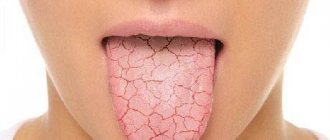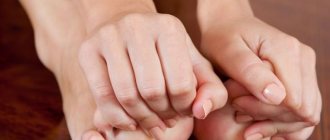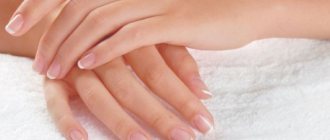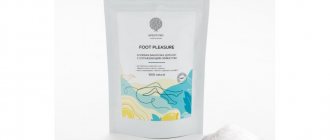What are cracked toes?
The appearance of cracks on the fingers is a type of dermatitis - a skin disease. This problem causes a number of physiological and aesthetic troubles. It is of particular relevance in the summer. Cracks are observed between the toes, on the heels and other parts of the foot. Due to increased dryness of the skin, small marks appear on it. Damage to the epidermis leads to the penetration of microbes. As a result, the notches become deep cracks that cause pain and serve as a place for the accumulation of pathogenic microorganisms, such as fungi or bacteria.
Factors that cause cracks to appear
The skin on the arms and legs is highly sensitive, so it can withstand aggressive external influences with great difficulty. Deep, poorly healing cracks in the fingers, feet and palms are one of the most unpleasant problems that modern people face. Sores on the legs create discomfort while walking, which significantly impairs the quality of life. As for injuries on the upper extremities, they present primarily an aesthetic problem. In addition, the cracked areas of the epidermis hurt upon any contact with anything.
Vinikli nutrition - consult a doctor
To make an appointment for a consultation, call or fill out the return form:
(050) 301-99-26 (067) 446-11-79
Damn,
Your request has been successfully sent!
A call center specialist will contact you as soon as possible to clarify all the details.
The appearance of such a symptom should alert you, since it often turns out to be a signal of the presence of a serious systemic disease. For diagnostic purposes, it is recommended to visit a therapist or dermatologist. The doctor will examine the painful area, make a preliminary diagnosis and prescribe the necessary tests. The sooner you contact a specialist, the greater the chances of avoiding complications. In addition, you need to understand that poorly healing wounds are an open door for pathogens, and if left untreated, the risk of infection increases significantly.
There are several factors that cause cracks in the legs or arms.
- Hypovitaminosis. Increased dryness of the skin is caused by a lack of vitamins A and E. As a rule, a lack of nutrients occurs in the winter-spring period, when there is an acute shortage of plant foods in the diet.
- Exposure to cold. This factor affects the hands and palms to a greater extent, since they are the ones that are most exposed to frost in winter if you are in the habit of walking without gloves. The epidermis dries out and loses its initial elasticity, which causes partial tears.
- Inconvenient or poor quality shoes. In order to save money, people buy shoes and boots made of cheap materials, in which their feet sweat and are subject to severe friction. Such shoes interfere with blood circulation in the feet and injure the delicate skin. Wearing shoes that are too narrow or wide has a similar effect.
- Working with household chemicals without gloves. Aggressive components of detergents destroy epidermal cells, dehydrating them and depriving the skin of the hands of some collagen.
Causes
A common cause of cracks is excessive dryness of the feet. This symptom is caused by a number of unfavorable factors. More often the problem is associated with uncomfortable shoes or low-quality materials. A shoe that is too narrow may cause a crack on the little finger. When walking, the moisture released by the foot is not absorbed, which creates a favorable environment for the proliferation of fungi and bacteria. Properly selected socks can help avoid this problem - they should be made of cotton or other natural fabric.
Flip-flops are another cause of cracks, but this time on the heels. When walking, shoes constantly hit the skin, disrupting blood microcirculation. You can correct the situation by stopping wearing flip-flops. Among other external and internal causes of the formation of cracks in the toes are:
- vitamin deficiency - a deficiency of mainly vitamins A, E and B;
- violation of hygiene rules;
- fungal infections;
- poor nutrition;
- diabetes mellitus and other endocrine diseases;
- skin injuries;
- dehydration.
On my feet
Cracked feet are often accompanied by a number of other symptoms that make the skin condition worse. These include itching, unpleasant odor, bleeding, burning and pain when walking. A combination of such symptoms can provoke the appearance of:
- chlorinated water;
- walking barefoot;
- lack of personal hygiene;
- metabolic disorders;
- diabetes;
- vitamin deficiency;
- allergic reactions;
- heart and vascular diseases;
- hyperkeratosis;
- hot arid climate;
- increased load on the legs;
- fungal infections;
- use of household chemicals with a high level of alkali;
- wearing uncomfortable tight shoes.
On the thumb
If cracks are observed on the big toes, then the problem is not limited to this symptom. Many patients note that the appearance of the nail becomes unaesthetic. In addition, the plate may peel off and crack. All this is accompanied by itching and redness of the skin around the nail. All this indicates the development of a fungal infection. Gradually, the described symptoms spread to other nail plates.
If cracks in the thumb are accompanied by excessive fragility and dullness of the nail, then the cause is a lack of fluid in the body or vitamin deficiency. Other factors in the development of this skin defect include:
- endarteritis or atherosclerosis of the lower extremities;
- hyperkeratosis;
- metabolic disorders;
- lack of personal hygiene;
- summer, when the skin is prone to chafing and roughening, followed by the appearance of calluses;
- phlebeurysm;
- psoriasis;
- insufficient hydration of the skin of the legs;
- eczema.
Between the toes
The appearance of cracks in the interdigital space is a characteristic sign of a fungal infection. If you have recently visited a swimming pool, sauna or bathhouse, then the risk of fungal infection is very high. Sometimes the cause is not related to the disease. Without proper daily care, the skin begins to peel off and cracks appear between the toes. Lack of grains also causes these symptoms. If the diet is low in eggs, milk and liver, then cracks between the toes may also appear. The list of reasons for their formation includes the following:
- diabetes;
- thyroid diseases;
- incorrectly selected shoes;
- walking barefoot on asphalt, sand and earth;
- effect of chlorinated water.
- How to lose weight in 2 weeks at home - the most effective diets and exercises
- Eggplants with tomatoes and garlic for the winter - preparation. Recipes for eggplant salads for the winter with photos
- Honeysuckle compote for the winter
Treatment
Since the injury described is not always easy to identify, it is recommended to consult a doctor for an accurate diagnosis. In addition to the traditional questioning of the patient, as well as an external examination, the doctor will order an x-ray. The most vague clinical picture with confusing symptoms sometimes requires additional computed tomography or magnetic resonance imaging.
A crack in the toe can be treated at home. At the same time, general medical control over the process remains a necessary condition.
First aid
Immediately after an injury, the main task is to relieve pain. For this purpose, the use of cold, as well as taking painkillers, are suitable. Cold is applied locally. This means that if the bones crack in your big toe, there is no need to cool the entire foot.
The second important point comes down to applying absorbable, as well as anti-inflammatory creams and ointments to the site of injury. They will help avoid large swelling, severe bruising, and pain. Damage to soft tissues is rarely caused by cracks, but if this happens, the wound should be immediately disinfected, stopping the bleeding if necessary.
Read also: Inflammation of the coccyx from symptoms to treatment
ethnoscience
Quite effective, especially with constant consultation with doctors, are home remedies - compresses, lotions. The best options for a compress are bodyaga in powder form, plantain, regular alcohol or vodka. Cabbage leaves, larkspur, and mumiyo are suitable as a lotion. It is recommended to leave the compress overnight, but keep the lotion for ten minutes to half an hour.
You can turn to folk remedies immediately after an injury, after completing first aid measures. The duration of treatment is until the result is achieved. If there is no progress within a week, you should talk to your doctor about it.
Therapeutic methods
To quickly heal cracks in the bones of the big toe, little toe or any other finger, doctors suggest turning to traditional physiotherapy. These are medicinal or pain-relieving electrophoresis, UHF, quartz. Sometimes physical therapy techniques are used to return the finger to normal mobility.
Physiotherapy is good after the main pain syndrome has been eliminated, that is, on the second or third day after the injury. An excellent addition to treatment would be correcting nutrition towards naturalness, taking calcium supplements and multivitamin complexes.
Treatment of cracks between toes
There are several ways to cure cracked toes. Any method is aimed at eliminating the cause of the development of this symptom:
- If the cracks are caused by uncomfortable shoes, then you need to change them to another one.
- In case of vitamin deficiency, it is necessary to provide the body with a sufficient amount of vitamins and microelements.
- If you have fungus, it is recommended to wash your feet with regular laundry soap. This pathology requires treatment with antifungal drugs, otherwise complications in the form of suppuration and the addition of a bacterial infection are possible.
Vaseline or lanolin cream can help eliminate dry feet. The fingers are generously lubricated with any of the products, after which cotton socks are put on. The main treatment for cracks is aimed at softening the skin and eliminating its dryness. For this purpose, the following methods and means are used:
- Soda baths. For 2 liters of hot boiled water, take a quarter of a bar of tar soap (grated), 1 tsp. baking soda. After mixing the ingredients, the solution is poured into a basin. The feet are kept in it for about 20-40 minutes. At the end of the procedure, the feet are thoroughly dried and lubricated with nourishing cream.
- Lotions. For these procedures, decoctions of medicinal herbs are used, for example, chamomile, calendula, and sage.
- Lubrication with SixtuMed oil. This method is used for diabetes mellitus, because steaming your legs is prohibited with this disease. The oil is based on medicinal plants that exhibit antifungal and antibacterial properties. Add a couple of drops of this product to warm water. The bath is taken for 15-20 minutes, then the feet are dried and lubricated with SixtuMed balm.
- Hardware pedicure. Helps with deep cracks, removes the upper stratum corneum of the skin. One procedure per month is enough for complete recovery.
Medications
The choice of specific medications depends on the cause of your cracked toes. This is necessary so that the treatment eliminates not only the symptom, but also the provoking factor. Depending on the nature of the cracks, the following treatment regimens can be used:
- For dry calluses. Complex treatment with a compress with Shostakovsky balm, after which the skin is lubricated with Solcoseryl gel or Radevit ointment, is effective. If your skin is too dry, it is recommended to use Dardia cream. It provides hydration and elasticity to the skin.
- For fungal infection. It is necessary to use antimycotic agents, both local and oral. For external application, terbinafine-based creams are recommended: Lamisil, Thermikon. When local treatment does not help, you need to start taking pills that destroy the fungus from the inside. For this purpose, agents based on fluconazole, miconazole, clotrimazole, and ciclopirox are used.
- For diabetes mellitus. In the case of such a disease, due to possible contraindications, not all medications are used. SixtuMed oil and balm are allowed, they moisturize and protect the skin.
- For painful cracks. Painkillers help relieve this symptom. An example is the drug Ketanov. It is very strong, so before using such a remedy you should try to relieve pain with Analgin, Ibuprofen or Nimesil.
Each group of drugs includes several remedies that can be used for cracked fingers. You should not prescribe them yourself. If, after regular use of your chosen medication, a positive effect does not occur, then you should seek help from a doctor. The cause of cracks may be fungus. In this case, medications are prescribed taking into account the causative agent of the disease, which can only be identified through tests. In general, the following drugs are effective and proven against cracked fingers:
- Solcoseryl. This is an ointment based on hemoderivat from calf blood. The main effect of the drug is to activate tissue metabolism, which helps stimulate tissue regeneration. Solcoseryl is indicated for the treatment of difficult-to-heal wounds, burns, frostbite, and trophic skin disorders. Before using the ointment, treat the skin with a disinfectant solution. Next, the product is applied in a thin layer to the wound surface. Do this 2-3 times a day. An adverse reaction may include allergies, swelling, urticaria, and hyperemia. Contraindication is intolerance to benzoic acid. The advantage of Solcoseryl is the safety of the composition.
- Lamisil. Available in the form of tablets, ointments and sprays based on terbinafine. They are used to treat mycoses, onychomycosis, foot fungus, ringworm of the trunk or legs, and lichen versicolor. Tablets are taken at 250 mg daily. The ointment and spray are applied to the affected area in a thin layer 1-2 times a day. Lamisil should not be used for liver disease. Adverse reactions can occur from the nervous, immune, digestive, and musculoskeletal systems. Pros of Lamisil: compliance with international standards, wide spectrum of antifungal activity, safety, speed of action.
- SixtuMed. This is a special product for diabetics, which increases the protective function of the skin, helps soften it and promotes rapid tissue restoration. The composition of the oil includes plant components: sage, clove, angustifolia lavender. They have antibacterial, anti-inflammatory and antifungal effects. Oil is added to warm water (temperature up to 36 degrees). For 4-5 liters of liquid take 1 tsp. facilities. Leave your feet in the bath for 7-10 minutes. Then wipe the feet dry, especially the spaces between the toes. SixtuMed balm is applied to already dry skin. Do not use products from this line on open wounds and ulcers. Advantages of SixtuMed: high safety and hypoallergenic.
Traditional methods
If the cause of the cracks is not a fungus or another serious disease, then the problem can be eliminated using folk remedies. They can also be used additionally during drug treatment. Compresses, decoctions, and baths reduce inflammation and heal the skin. The following folk recipes help to achieve this effect:
- For 2 liters of hot water, take 1 tsp. mineral soap and 1 tbsp. l. soda Pour the solution into a bowl. Soak your feet in it for 10-15 minutes. Then dry the skin thoroughly and then apply cream.
- At night, apply a soft cloth soaked in liquid honey to your feet. Wrap the top of the foot with a bandage. In the morning, rinse them, dry them and lubricate them with rich cream or olive oil.
- Dissolve 1 tsp in 1 liter of hot water. boric acid. Leave your feet in this solution for 10-15 minutes. Next, dry your feet thoroughly and generously lubricate them with Vaseline.
What is onychorrhexis or crack along the nail?
The beauty of your nails directly depends on their health.
It’s hard to disagree that well-groomed nails can add neatness and neatness to an image. But not in every situation the beauty of nails can be achieved with a regular manicure or pedicure. In some cases, the nail plates have serious defects, which are manifestations of somatic pathologies. Such manifestations require the intervention of a podiatrist. Violations of the integrity of the nail plate, delamination or brittleness of the nails require not only aesthetic closure with gel polish, but also treatment.
One type of nail deformation is onychodystrophy.
Onychodystrophy is a group of diseases of the nail plate, which are characterized by the appearance of changes in the color of the nail, its shape or structure. One of the pathologies of the group of onychodystrophies is onychorrhexis.
Onychorrhexis is a type of structural change in the nail plate, in which its longitudinal separation occurs. In appearance, the pathology resembles a nail crack running from the free edge to the base. The bundle can be single or multiple. As a rule, multiple onychorrhexis occurs on the fingernails, while on the feet the nail plates of the big toes are more often affected.
Onychorrhexis occurs equally often in women and men. If we single out an age category that is more susceptible to pathology, then these are elderly people.
Cracked toenail, what should I do? Such a complaint is a good reason to consult a podiatrist. The specialist will conduct a thorough examination of the defect, find out its etiology, and also draw up a treatment plan for the nail plate defect.
Prevention
An important condition for prevention is the right shoes. It should not be too narrow or wide. Shoes are selected according to the season. In summer, it is better to wear open models that will not lead to excessive sweating of the feet. The best option for any time of year is shoes made from natural materials. Other measures to prevent cracking:
- maintain proper nutrition;
- If your feet are very sweaty, wash them several times a day;
- do not wear someone else's shoes;
- regularly lubricate your feet with a softening cream;
- massage your feet with different essential oils;
- choose socks only from natural materials;
- When visiting the pool and sauna, use your own hygiene products and wear your own slippers.










